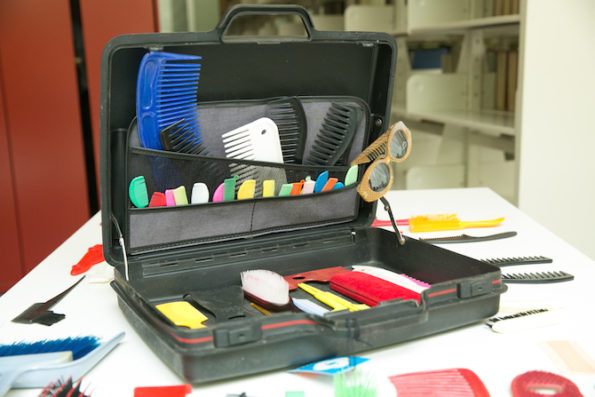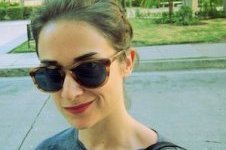Search
To search for an exact match, type the word or phrase you want in quotation marks.
A*DESK has been offering since 2002 contents about criticism and contemporary art. A*DESK has become consolidated thanks to all those who have believed in the project, all those who have followed us, debating, participating and collaborating. Many people have collaborated with A*DESK, and continue to do so. Their efforts, knowledge and belief in the project are what make it grow internationally. At A*DESK we have also generated work for over one hundred professionals in culture, from small collaborations with reviews and classes, to more prolonged and intense collaborations.
At A*DESK we believe in the need for free and universal access to culture and knowledge. We want to carry on being independent, remaining open to more ideas and opinions. If you believe in A*DESK, we need your backing to be able to continue. You can now participate in the project by supporting it. You can choose how much you want to contribute to the project.
You can decide how much you want to bring to the project.

Since April 2015, Sol Henaro has been the curator for the collection of documents and in charge of the Centro de Documentación Arkheia, the bibliographic and documentation archive of the Museo Universitario de Arte Contemporáneo at the Universidad Nacional Autónoma de México. The Arkheia documentation centre was inaugurated in November 2008 at the same time as the museological project MUAC. If this important museum has become a key focus for contemporary avant-garde practices for the public in Mexico and internationally, Arkheia, today, is also one of the most active and complete collections, with public access, of recent Mexican and Latin-American art. One of Arkheia’s objectives is to reinforce a reference archive with documentation about artistic practices in Mexico for purposes of storage, preservation, study and diffusion. Amongst the collaborative projects they have underway, what stands out are the structure for the collaboration with the postgraduate course in Art History to propitiate research into the documentary archive; the second International Encounter “Archivos Fuera de lugar”; and the collaboration between the Ex Teresa Arte Actual (INBA) and the Centro de Documentación Arkehia (MUAC-UNAM), amongst others.
We talk to Sol Henaro about the possibility of creating a historiography of contemporary art from a university museum of art, of the flexibility of standards of practice, the responsibilities an archive has to its public and its collection, and the importance of maintaining autonomy with regard to the contemporary art market, and, why not, about how to curate an archive.
PCG- Sol, you entered into curating an archive through curating collections of art objects. Can you talk about the translation of one idea of curating to another?
SH- I think that every project you conceive or join calls for you to “translate” in some manner and make adjustments. That is to say, I don’t understand curating as an immobile practice, with one sole criterion; it seems extremely questionable to think of curating as a sort of recipe that can be applied equally to any case. I endeavour to be consequent with my ethical-political stance relating to artistic practices and historiography and with this apply my interests to the different working formats I confront (teaching, management, curating, writing…). Let me explain: first off I served five years as curator of the art collection of the Museo Universitario Arte Contemporáneo (MUAC, UNAM) and from there I procured to intervene in this narrative of memory, bringing together individuals and collectives who I considered provoked agency through their artistic practices or otherwise through specific works. Shifting a year ago to take charge of the documentary collection and become the person responsible for the Centro de Documentación Arkheia (MUAC), I continued this interest but from a different collection that is made up of equally singular and significant productions but that in this case, as collections of documents, are made up of heterogeneous materials. In both posts, my interest has been to question certain absences and to procure to summon specific voices to the narrative of memory that involves the MUAC collection. A collection, one mustn’t forget, that is public and debated.
I’m interested in talking about the status of the object in your work. How do you work with the curating of objects of documentation, rather than a curatorial practice centred on the hermeneutics of the art object?
Collections of documentation are universes in themselves. Each collection has a personality that distinguishes it from other collections but in all cases, the “heart of the matter” is heterogeneous: personal documents, institutional sketches, artworks of different types, posters, games, plans, books, postcards, texts… what can enter or integrate a collection is very diverse. All the materials that make up the collection can be as interesting and pertinent as they are absurd and nonsensical, depending on who activates a reading around them and according to their capacity for a historiographic or hermeneutic exercise or in relation to the notion of the archive. I consider that the practice of art is certainly not limited to the “art object” in the usual conventional sense. I believe there are diverse elements, documents, situations and energies that contextually can greatly enrich an approach and in this sense I understand as “research material” almost anything for which I have a framework that enables me to relate to this object or material “x”.

How can the archive be placed in circulation within a community? Can you talk about the strategies of mediation or communication with the public that working with the archive requires?
In the case of the Centro de Documentación Arkheia, which is the project I am currently in charge of, we are very clear that one of our principal aims is its public character that as a university museum distinguishes us. Here we are not “accumulating” archives in the sense of merchandise that enters into the museum for reification. One of the most requested uses is precisely for access to the collection for research purposes for either curatorial projects or graduate research, for example. Another way of putting the archives into circulation is through exhibition devices that we generate or curate about specific Documentary Collections to generate activations or new displays with such materials. Recently it has been very interesting to work on the research into our documentary collections through practices that are usually far removed, for example through a chef or a hip-hopper-rapper whom we commission with the task to approach our collections through their practices. We work hard in our endeavours to shed the mothballs to get closer to new users and combat the prejudices that such collections are boring places just for meta-specialists.
I agree that combating the reification of its contents is one of the challenges an archive faces. As you say, Arkheia is an archive within a university museum, MUAC, in an important public university, UNAM. In dealing with specialised collections in contemporary art, an industry where notions of authorship and social capital function differently from the academic world, what challenges does Arkheia face? How can you maintain autonomy from the industry but still reflect and document what happens in it?
If you are referring to capital gains or the interest that currently this type of collection arouses in the maelstrom of contemporary art I would say it depends. We have a critical, historiographical interest, committed to the generation of other accounts, other narratives…but certainly “the eye of Mordor” (the rapacious market) has also shifted in seeing these boules of meaning that archives can be. We (MUAC-UNAM) can’t compete in economic terms with specific private institutions or private collectors that usually count with much more extensive resources than those of a public institution. Nevertheless, we have another type of capital that is very important, which is the confidence that being part of a university, public institution generates, one that procures to nurture a documentary collection to place it at the disposition for public consumption and research public free of charge. This argument doesn’t interest all the artists, owners, or inheritors of archives, but those who are more committed and sensitive are interested and it is a source of possibilities that not everyone can so easily sustain.
I really like your defence of the archive of contemporary art as a public service open to consultation and interpretation in different modes, through academic or curatorial research, through even the reading of a rapper-hip-hopper or the work of a chef. How do you read this versatility of the art-historical institution, its opening up to be performed and re-enacted in distinct registers, within the panorama of contemporary Mexican and global art? Are you in dialogue with other institutions?
I believe it is a challenge to procure ‘other’ forms of approach to research and in this, it’s not that we are totally clear about how to carry this out but we are convinced that we can’t avoid or tackle the question of modes only once and think of it is an “issue that’s been done and dusted”. We’ll continue to be watchful and exercise self-criticism in the revision of our projects, pondering about where to take the project and how.
In relation to this question, in the last few years, various centres of documentation within art museums or beyond them have appeared that indicate a labour and vocation that is more or less similar to ours. I would say for example that the Archive and Library of MACBA’s Study Centre has been significant for me because I used it and appropriated it during the two years in which I participated in the Programme of Independent Studies of MACBA but I’m also interested in projects like the Library and Documentation Centre at the MNCARS, the Interference Archive and, of course, not just intellectually but also affectively, the collective practice with the Red Conceptualismos del Sur that I’ve formed part of for the last 6 years. In the RCS I’ve found an extremely enriching and powerful dialogue, there I’ve been able to grow collectively around different questions that traverse our endeavours as researchers, curators, historians, etc. in our critical understanding of memory and of course critical genealogies.

Paloma Checa-Gismero is Assistant Professor at San Diego State University and Candidate to Ph.D. in Art History, Criticism and Theory at the University of California San Diego. A historian of universal and Latin American contemporary art, she studies the encounters between local aesthetics and global standards. Recent academic publications include ‘Realism in the Work of Maria Thereza Alves’, Afterall, autumn/winter 2017, and ‘Global Contemporary Art Tourism: Engaging with Cuban Authenticity Through the Bienal de La Habana’, in Tourism Planning & Development, vol. 15, 3, 2017. Since 2014 Paloma is a member of the editorial collective of FIELD journal.
"A desk is a dangerous place from which to watch the world" (John Le Carré)